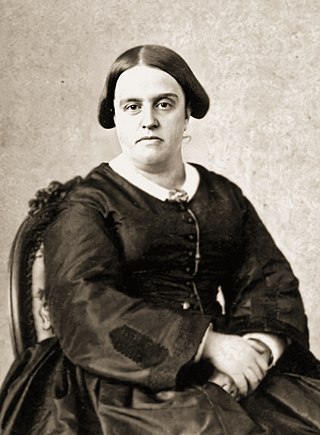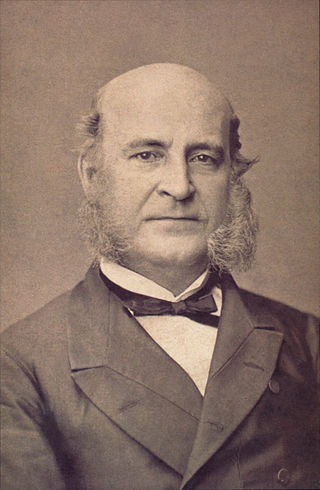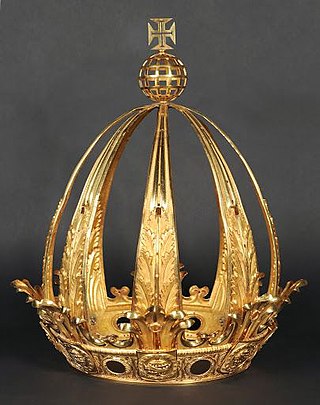Background
Progressive League
| | This section is empty. You can help by adding to it. (December 2009) |
War effort and slavery abolition
| | This section is empty. You can help by adding to it. (December 2009) |
The 1868 Brazilian political crisis led to the resignation of the ruling Progressive cabinet and the return of the Conservative Party to power in the Empire of Brazil.
| | This section is empty. You can help by adding to it. (December 2009) |
| | This section is empty. You can help by adding to it. (December 2009) |
| | This section is empty. You can help by adding to it. (December 2009) |
| | This section is empty. You can help by adding to it. (December 2009) |
| | This section is empty. You can help by adding to it. (December 2009) |

The Empire of Brazil was a 19th-century state that broadly comprised the territories which form modern Brazil and Uruguay. Its government was a representative parliamentary constitutional monarchy under the rule of Emperors Pedro I and his son Pedro II. A colony of the Kingdom of Portugal, Brazil became the seat of the Portuguese Empire in 1808, when the Portuguese Prince regent, later King Dom John VI, fled from Napoleon's invasion of Portugal and established himself and his government in the Brazilian city of Rio de Janeiro. John VI later returned to Portugal, leaving his eldest son and heir-apparent, Pedro, to rule the Kingdom of Brazil as regent. On 7 September 1822, Pedro declared the independence of Brazil and, after waging a successful war against his father's kingdom, was acclaimed on 12 October as Pedro I, the first Emperor of Brazil. The new country was huge, sparsely populated and ethnically diverse.

Princess Januária of Brazil was a Brazilian princess and Portuguese infanta (princess). She was the second daughter of Pedro I of Brazil and IV of Portugal and his first wife, Archduchess Maria Leopoldina of Austria.

Dona Teresa Cristina, nicknamed "the Mother of the Brazilians", was Empress of Brazil as the consort of Emperor Dom Pedro II from their marriage on 30 May 1843 until 15 November 1889, when the monarchy was abolished. Born a princess of the Kingdom of the Two Sicilies in present-day southern Italy, Teresa Cristina was the daughter of King Don Francesco I (Francis I) of the Italian branch of the House of Bourbon and his wife Maria Isabel. It was long believed by historians that the Princess was raised in an ultra-conservative, intolerant atmosphere which resulted in a timid and unassertive character in public and an ability to be contented with very little materially or emotionally. Recent studies revealed a more complex character, who despite having respected the social norms of the era, was able to assert a limited independence due to her strongly opinionated personality as well as her interest in learning, sciences and culture.
João Carlos Pedro Leopoldo Borromeo, Prince of Beira; was a Portuguese infante (prince), son of heir-apparent to the throne Pedro, Prince Royal and Maria Leopoldina of Austria.

Dona Paula was a princess of the Empire of Brazil and thus, a member of the Brazilian branch of the Portuguese House of Braganza. Her parents were Emperor Dom Pedro I, the first ruler of an independent Brazil, and Archduchess Leopoldina of Austria. Born in Rio de Janeiro, Paula was the couple's fifth child and third daughter child; she lost her mother at the age of three and her father at the age of eight, when he abdicated and left Brazil for Portugal, where he wanted to restore the throne of Paula's eldest sister, Maria da Glória, who should have become queen regnant of Portugal.

José Maria da Silva Paranhos, Viscount of Rio Branco, was a Brazilian politician, monarchist, diplomat, teacher and journalist. Rio Branco was born in Salvador, in what was then the Captaincy of Bahia, to a wealthy family, but most of the fortune was lost after his parents' deaths early in his childhood. In 1871, Rio Branco became the President of the Council of Ministers for the first time. He would become the Council's longest-serving president, and his cabinet the second longest, in Brazilian history. His government was marked by a time of economic prosperity and the enactment of several reforms. The most important of these initiatives was the Law of Free Birth, which granted freeborn status to children born to slave women. Rio Branco led the government that enacted this law, and its passage increased his popularity. His government was plagued by a long crisis with the Catholic Church that resulted from the expulsion of Freemasons from its lay brotherhoods. After more than four years heading the Cabinet, Rio Branco resigned in 1875. Following a long vacation in Europe, his health swiftly declined and he was diagnosed with oral cancer. Rio Branco died in 1880 and was widely mourned throughout the country. He is regarded by most historians as one of Brazil's greatest statesmen.

Dom Afonso was the Prince Imperial and heir apparent to the throne of the Empire of Brazil. Born in Rio de Janeiro, he was the eldest child of Emperor Dom Pedro II and Dona Teresa Cristina of the Two Sicilies, and thus a member of the Brazilian branch of the House of Braganza.

The siege of Paysandú began on 3 December 1864, during the Uruguayan War, when Brazilian forces and Colorado forces attempted to capture the city of Paysandú in Uruguay from its Uruguayan Army defenders. The siege ended on 2 January 1865, when the Brazilian and Colorado forces conquered the town.

Pedro de Araújo Lima, Marquis of Olinda was a politician and monarchist of the Empire of Brazil. His long political career spanned the reigns of John VI, Pedro I and Pedro II. He was also one of the founders of the Brazilian Conservative Party.

The early life of Pedro II of Brazil covers the period from his birth on 2 December 1825 until 18 July 1841, when he was crowned and consecrated. Born in Rio de Janeiro, the Brazilian Emperor Dom Pedro II was the youngest and only surviving male child of Dom Pedro I, first emperor of Brazil, and his wife Dona Leopoldina, archduchess of Austria. From birth, he was heir to his father's throne and was styled Prince Imperial. As member of the Brazilian Royalty, he held the honorific title "Dom".

The legacy of Pedro II of Brazil became apparent soon after his death. Emperor Pedro II was the second and last monarch of the Empire of Brazil, whose long 58-year reign (1831–1889) represented a time of remarkable prosperity and progress for his country. Despite his achievements, he was deposed in a coup by disgruntled republicans, though there was no desire for a change in the form of government among the majority of the Brazilian people.

The decline and fall of Pedro II of Brazil took place in the 1880s. It coincided with a period of economic and social stability and progress for the Empire of Brazil, with the nation achieving a prominent place as an emerging power in the international arena.

The history of Pedro II of Brazil in the Paraguayan War began after the invasion of Brazilian provinces by Paraguayan forces by the end of 1864.

The Apogee of Pedro II of Brazil refers to the decade from 1870 to 1881 during which Emperor Pedro II, and Brazil itself, reached the height of their prestige and activity. The nation experienced rapid development and the emperor was intimately involved in pushing for further progress on a variety of economic and cultural fronts. It was during this period that serious efforts toward the end of slavery began to be implemented.

In the life of Pedro II of Brazil, growth in both his personal and public roles took place in the decade beginning in 1853. At the start of this period, he was still struggling to find his way. But by its end the Emperor was a mature and steady leader, and Brazil was united and on its way to unprecedented national prosperity and prestige.

Dom Pedro Afonso was the Prince Imperial and heir apparent to the throne of the Empire of Brazil. Born at the Palace of São Cristóvão in Rio de Janeiro, he was the second son and youngest child of Emperor Dom Pedro II and Dona Teresa Cristina of the Two Sicilies, and thus a member of the Brazilian branch of the House of Braganza. Pedro Afonso was seen as vital to the future viability of the monarchy, which had been put in jeopardy by the death of his older brother Dom Afonso almost three years earlier.

Events in the year 1889 in Brazil.

The Liberal Rebellions of 1842 were a series of rebellions that took place in the Brazilian provinces of Minas Gerais and São Paulo in response to actions taken by emperor Dom Pedro II to unify power under the central government and limit the powers of the provinces. These rebellions were poorly coordinated and were put down by the central government to little effect. Along with the rebellions in Rio Grande do Sul, the Liberal Rebellions marked the end of a series of province-level rebellions that threatened the Empire of Brazil's stability.

The crown of Pedro I is the first imperial crown of Brazil and was made for emperor Pedro I of Brazil. It was made in 1822 for his coronation and was the symbol and emblem of Brazilian imperial power until it was replaced in 1841 by the crown of his son and successor Pedro II. It is one of the jewels of the Brazilian Empire and is now on display at the Imperial Museum in Petrópolis.